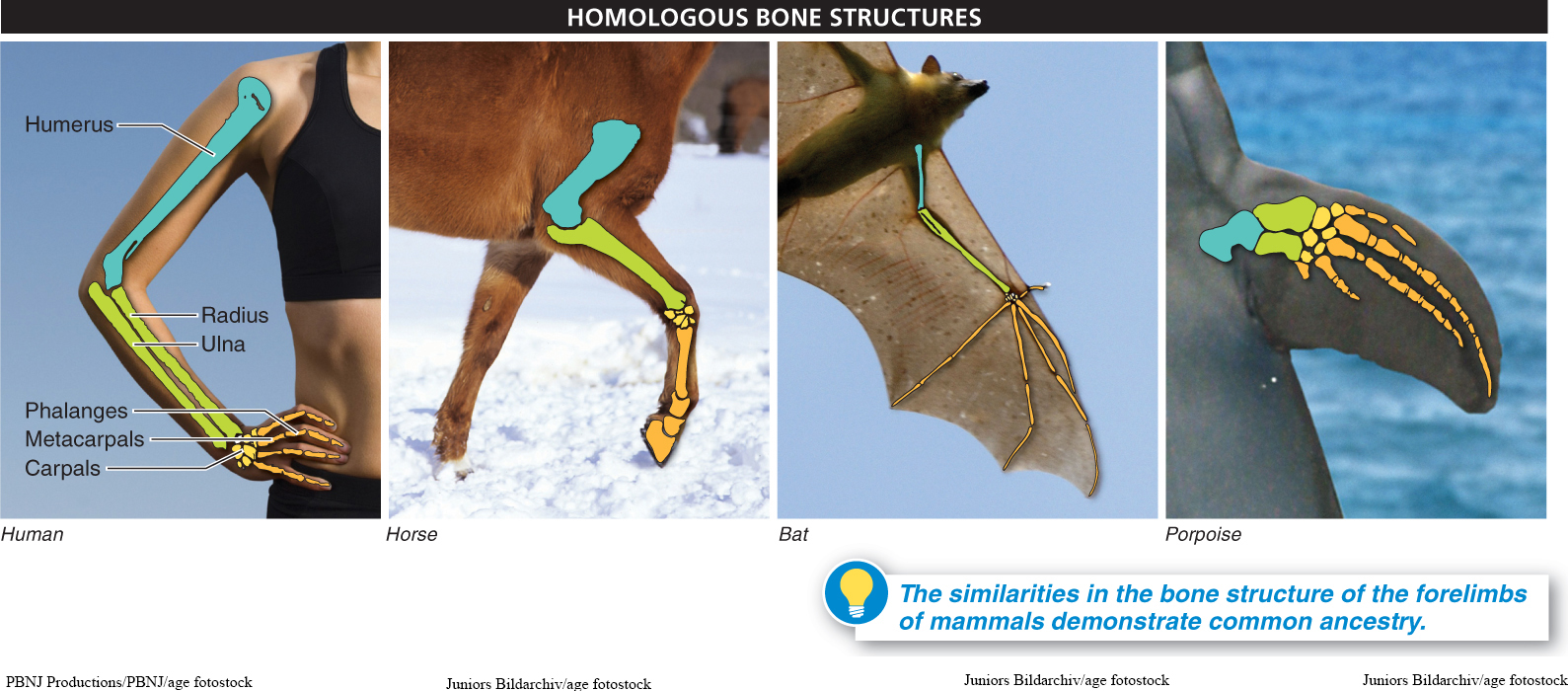If you observe any vertebrate embryo while it’s developing, you will see that it passes through a stage in which it has little gill pouches on the sides of the neck. It will also pass through a stage in which it has a long bony tail. This is true whether it is a human embryo or that of a turtle or a chicken or a shark. The gill pouches disappear before birth in all but the fishes. Similarly, we don’t find humans with tails. Why do these features exist during an embryo’s development? Such common embryological stages indicate that the organisms share a common ancestor, from which all have been modified (FIGURE 8-38). Study of these developmental stages and the adult body forms of organisms provides our third line of evidence for the occurrence of evolution.

353
Among adult animals, several features of anatomy reveal the ghost of evolution in action. We find, for example, that many related organisms show unusual similarities that can be explained only through evolutionary relatedness. The forelimbs of mammals are used for a variety of very different functions in bats, porpoises, horses, and humans (FIGURE 8-39). If each had been designed specifically for the uses necessary to that species—

Why do all vampire bats grow teeth specialized for grinding solid food, when the bats have a completely liquid diet?
At the extreme, homologous structures sometimes come to have little or no function at all. Such evolutionary leftovers, called vestigial structures, exist because they had value in an ancestor species. Some vestigial structures in mammals include the molars that continue to grow in vampire bats, even though these bats consume a completely liquid diet (FIGURE 8-40); eye sockets (with no eyes) in some populations of cave-

354
Not all organisms with similar-

TAKE-HOME MESSAGE 8.20
Similarities in the anatomy and development of different groups of organisms and in their physical appearance can reveal common evolutionary origins.
Why would a whale, which has no hind legs, actually possess a pelvis?
The pelvis of a whale exists because the evolutionary ancestors of the whale walked on four legs and needed a pelvis to do so.
355